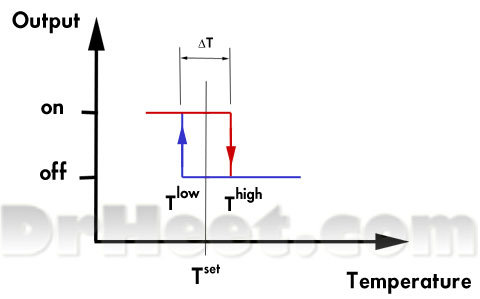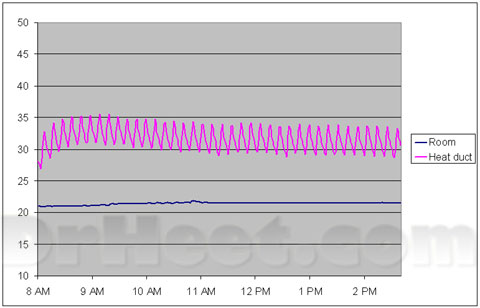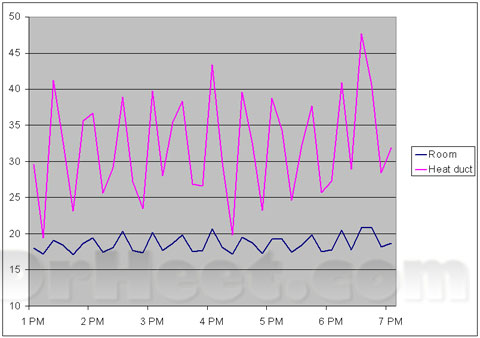What is Hysteresis?
When you see a chart of two dependent variables where the curve forms a loop, or an “eye”, you are probably looking at some form of hysteresis. This phenomenon occurs in magnetism (magnetic flux), rechargeable batteries (the “memory” effect), and it is a characteristic and intentional design feature of any thermostat, whether it is an older mechanical (bi-metal) type, or a modern electronic type. A thermostat’s hysteresis is discrete, because the output can only take on two states: heat on and heat off.

In the image above, the typical characteristics of a system with hysteresis are apparent. As the temperature falls (blue curve) and reaches the lower end of the hysteresis (Tlow), the thermostat calls for heat (Output=on). As the temperature rises (red curve), it will eventually reach the high point (Thigh) and the termostat shuts off again. For any given temperature within the range of the hysteresis, the output can have two states – on or off – depending on the direction of the curve.
The width of the hysteresis (the delta) is an important property. Different brands and models of thermostats can behave very differently. Some more expensive models allow the low and high temperatures to be changed, others don’t. The smaller the hysteresis of the thermostat, the more frequently it will cycle the furnace. The following chart shows a system with a thermostat hysteresis that is 0.5°C or less. The furnace cycles every 10 minutes.

On the other hand, the wider the hysteresis, the wider the temperature swings in the home. Even small temperature changes can be perceived as uncomfortable by humans, so chosing a thermostat with wide hysteresis just because of potential energy savings may not be a good choice. The following chart was recorded in a home with an older thermostat, possibly a mechanical bi-metal model, with a hysteresis that causes a temperature band of approximately 4°C. This is a very noticable temperature change. Consequently, the furnace cycles much less frequently, only about once or twice per hour.

At this point, there is no data available to Dr. Heet that would suggest an optimum for the hysteresis of a thermostat. It is clear that frequent furnace cycles reduce the efficiency, because during and immediately after firing up the furnace primarily heats itself and the heat ducts – which is energy lost. On the other hand, furnaces are designed to efficiently maintain a set temperature in a home and not to heat or cool the space across a wide temperature range. Dr. Heet is researching this particular subject and will publish data as it becomes available.



